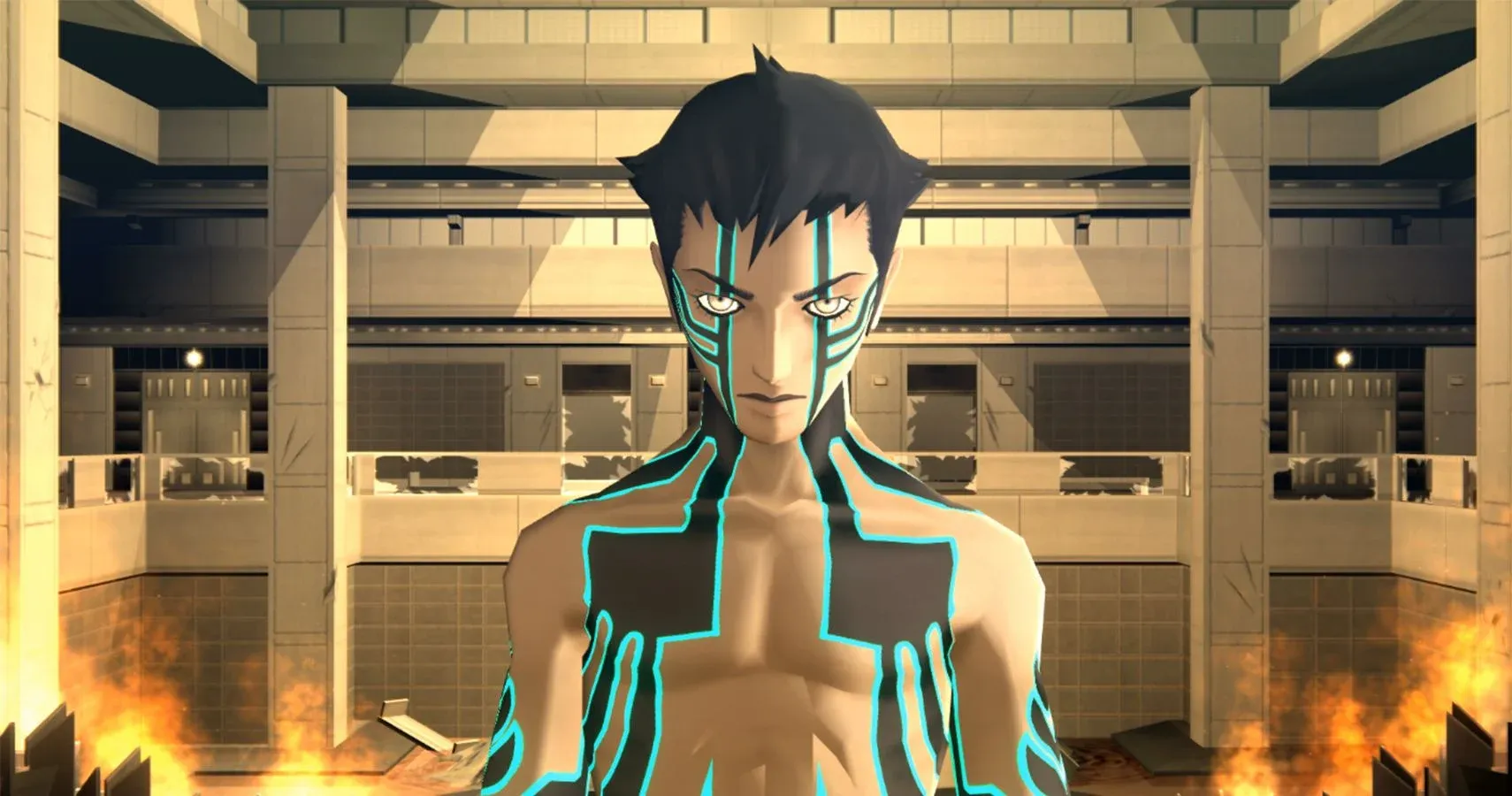The Architecture of the End
Living in Shin Megami Tensei III: Nocturne’s beautiful hellscape

When the Conception occurs, Tokyo is transformed. Bound to an event triggered by a sinister death cult, Tokyo’s transformation is not one of total hell, but of a twisted resolve that churns out an amalgamation of modernity called the Vortex World. Filled with demons, bizarre characters and a twisted landscape, the Vortex World’s most defining characteristic is not its traditionalist post-apocalyptic factors but its anti-humanist architecture, a parade of surrealist geometry that is both fascinating and horrifying.

The Shape of the Afterlife
The Shin Megami Tensei series loosely defines itself by a shared musculature, much in the same fashion as Final Fantasy. Where Final Fantasy titles separate themselves by narrative and character, the mainline SMT games do have narrative connective tissue, though this may not be obvious to your casual player. Playing any other entry in the series is not a required ticket for entry into Nocturne’s hellscape, though the enriched lore and demons might be familiar to players who only have some experience with the spin-off Persona titles. What is effectively unique and defining about the mainline SMT games are their intense difficulty and vague, abstract narratives.
Nocturne prides itself in these abstractions, being a game that doesn’t seem to have much interest in story coherence but instead leaves it up to the player to follow paths based on Reason, or the choice of any sentient being that can affect the actual physical reality of the world. Reason is a hidden mechanic in the SMT titles, useful only for achieving multiple endings and seeing how things might end up if certain characters have their way in the world. In Nocturne, the protagonist Demi-Fiend has many different paths to choose from as the twisted, labyrinthine Vortex World does its best to erase them from existence.

Desire and Design
While much of Nocturne is traditionalist in the best sense of your tried-and-true RPG, it is the design of the Vortex World that truly stands out, a character all its own. Kazuma Kaneko’s art direction shines through in unending layers of cerebral coherence, the Vortex World a playground of demonic abstractions. Its geometry is both orderly and feral, the buildings and dungeons of Nocturne designed to cause frustration and pain, their rigidity as cruel and callous as the very demons the Demi-Fiend fights over and over and over again. It is in this callous architecture that Nocturne’s post-apocalyptic world defines itself, an image of hell on Earth that is as defining and memorable as Dante Alighieri’s Inferno.
There is an immediacy to Kaneko’s art and design, a rare talent whose style is so discernible that they jump off both page and screen. Those of us who have been enjoying SMT games for years have enjoyed his art to the point that separating Kaneko from the series feels impossible — his demons, especially, are iconic. Kazumo Kaneko has even worked as a guest artist for Devil May Cry 3, designing the game’s arresting Devil Trigger forms for Dante and Vergil, as well as working as a guest mechanical and character designer for the Orbital Frames in Zone of the Enders: The 2nd Runner. There is a sharp, solid aspect of Kaneko’s art that adds great depth to any game that features otherworldly monsters and demons.
There is a cold stoicism to Kaneko’s work, which may initially seem counterintuitive to that of demonic design, but this is where Nocturne’s infernal architecture becomes defining. Brutal towers, striking obelisks, ruined cityscapes, and an almost child-like use of primary color mold the architecture of the Vortex World, subverting the expectations of the player that hell on Earth might be another cavernous landscape of lava beds and corpses. Kaneko’s post-apocalyptic wonderland would feel at home among the rigid corporate design of technical companies and startups, the robust use of simplistic geometric shapes striking against the cold nature of Nocturne’s transformed world.

The Uncaring RPG
Nocturne is a time capsule to a time in video game development that feels long dead. This strange, evocative era of the RPG included titles like Nocturne that took incredible chances in terms of combat, story, and design. Without a doubt, Nocturne is a game that many players will bounce off of, even with the remaster’s inclusion of multiple difficulty levels. It’s a game of vague story but also of feeling, an RPG that seems intent on eking out vibes as a source of explanation and world-building. Whether it’s maneuvering the aggressively crimson Amala Network or attempting the inordinately frustrating Kalpas of Nocturne’s alternative story path, each and every room is designed to disorient and awe at once, crafting a wholly chilling world of unexpected emotion.
Hell, for me, would be more in line with Kaneko’s structured version of selfsame hallways and stubbornly cube-shaped rooms — this is a structured apocalypse, one whose claustrophobia reeks of anti-humanism.
The Start of an Era
Shin Megami Tensei III: Nocturne is in many ways a nascent reaction to the New Weird of the early aughts, one built upon a response to our increasingly nationalistic world and the rise of constant global communication. Where Taro Yoko’s NieR series was drafted as a response to the effects of 9/11 and the War on Terror, Nocturne feels like a complete shutdown of human connection, a rigid rebuke to widespread global need. Humanity in Nocturne is more than fragmented, it is represented wholly by individuals whose individualism is tracked by selfish revolutionary wants. Instead of explaining their desires in long-winded RPG diatribes, Nocturne’s Vortex World presents itself in its most obvious state, where if you wish to live in the world or change it you must steel your resolve and satisfy your Reason.
This is a world that exists beyond all coherent understanding, one whose facilities are not novel or surprising but horrifying in their mundanity. The ideology that is baked into the various emergent cults of the Vortex World is readable by the hovels and cities they erect in the fallout years of the Conception, showcasing that any ideological advancement of the human race is more than folly, it’s irrationally absurd.

The Vortex World we are trapped in is the newest incarnation of a being that is so evil, its actual designs exist outside of the realm of human imagination. The Great Will, or YHVH, or the Axiom, is a being of deeply fascist divine rule, its design as cyclical and as rigid as the geometric architecture that binds the Vortex World to its physical space. The few reminders of the old world that exist, such as Shibuya, are almost comedic representations of the failure of humanity against such an oppressive magical force, one who can decide the fate of multiple worlds and dimensions at once. It is here that the player, the Demi-Fiend, must reject both the role presented to them and their past as they fight through a world of disorienting terroir.
Nocturne accomplishes its presentation in a way that most RPGs can only dream. It is a depressing, vague, brutal path forward, a game that never feels comfortable or safe, one whose world is defined by its sharp edges and uncaring atmosphere. The apotheosis of Nocturne is in its angular apathy, a conflict with no compromise in a world that is built upon nothing but complete disdain for humanity. This is the true horror of its hellscape, not one of the eternally burning souls but one of endless hallways and garishly lit liminal spaces.
